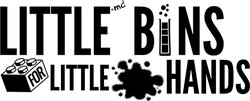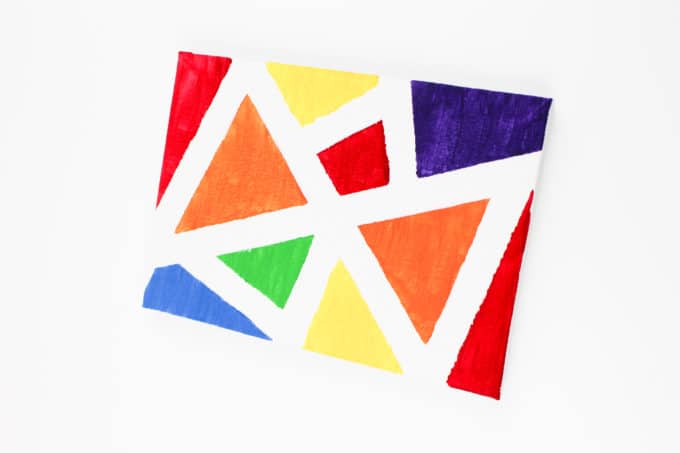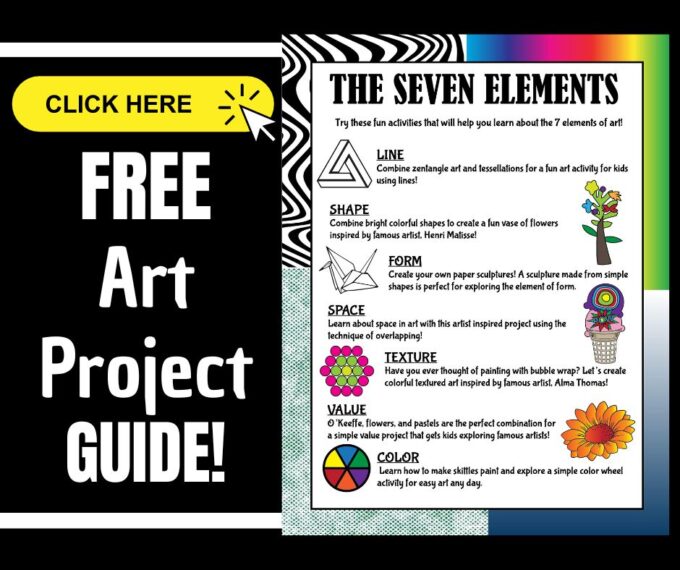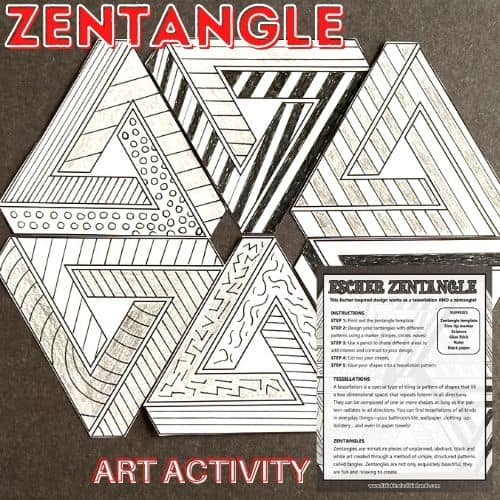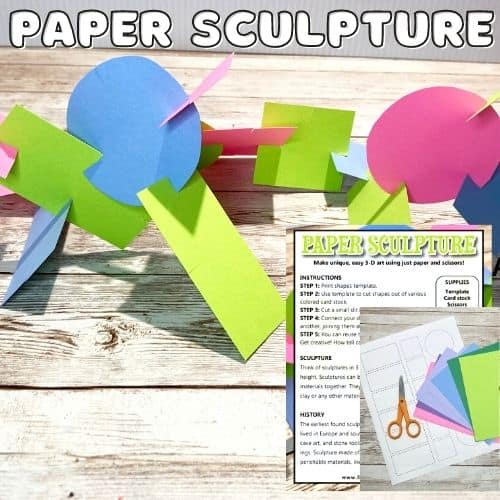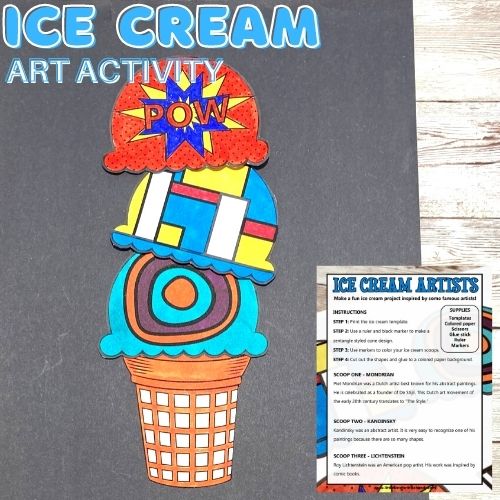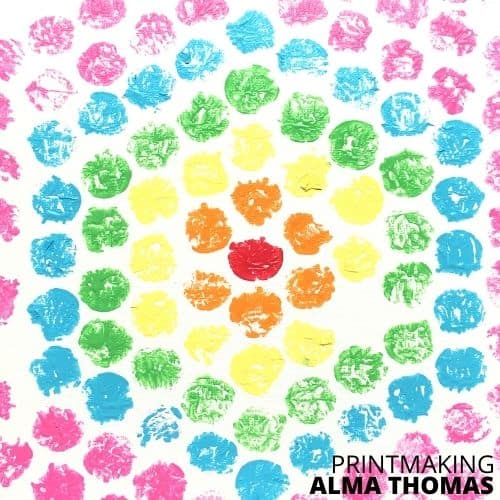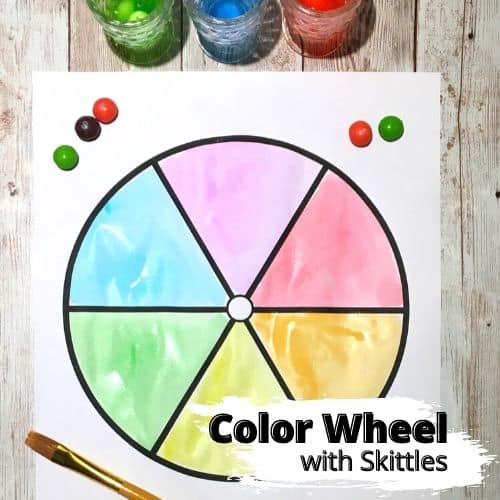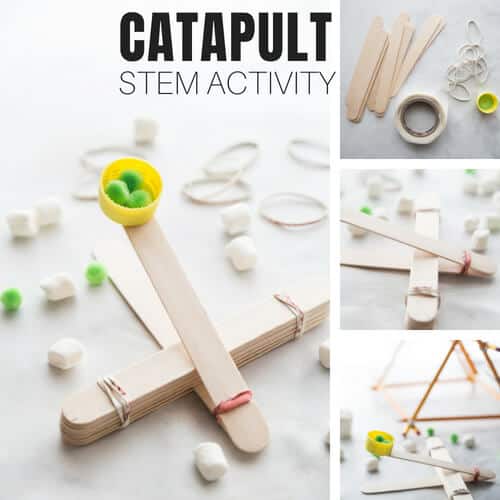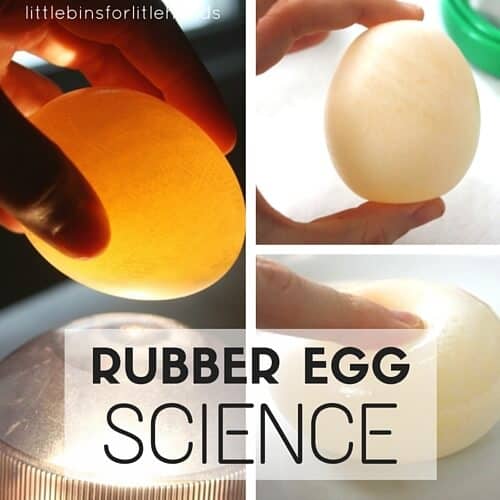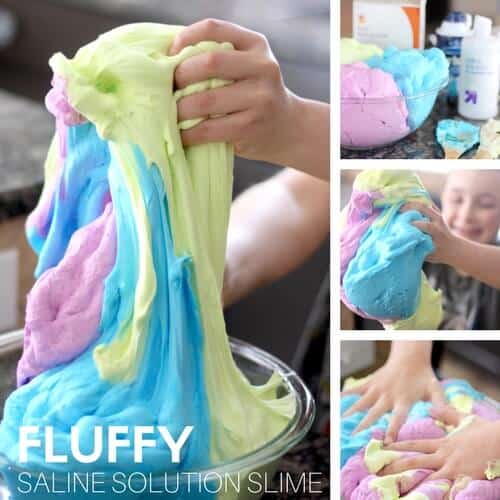Doing art with kids at home or in the classroom? Then you will want to think about the 7 elements of art! Explore what the 7 elements of art are, why they are important and helpful tips for how to teach them to kids. Plus, you’ll find examples of fun and easy art projects you can use! Make sure to download the free 7 Elements of Art printable below.
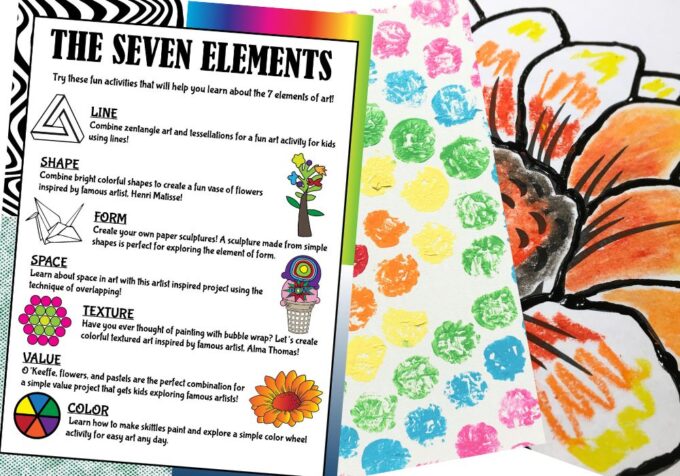
The 7 Elements Of Art
The elements of art are characteristics that are observable in all kinds of artwork. The 7 elements of art are line, shape, form, space, texture, value, and color. Any good artwork will include these 7 elements.
Check out this tape-resist rainbow art project that explores many of the elements of art in a very simple way!
Line
The line is one of the most basic but essential components of art! It is considered a primary design element and foundation of all drawings. Lines have different styles, shapes, sizes, and directions. Plus, they can also be different thicknesses, which creates different effects.
There are many different types of lines.
- Continuous Lines
- Broken Lines
- Jagged Lines
- Vertical Lines
- Horizontal Lines
- Diagonal Lines
- Zig Zag Lines
- Curly Lines
LOOK: Line Art With Keith Haring
Shapes
When a line meets up it forms a shape. Shapes are flat or 2-dimensional and can only be measured by height and length. There are all kinds of shapes.
Geometric shapes have straight lines, angles and points, and curves. Examples of geometric shapes include circles, squares, rectangles, and triangles.
LOOK: Geometric Shapes In Mondrian Art
Organic shapes are shapes that have no defined angles or standard lines. They are often found in nature, like the shape of cloud or a feather. In art, organic shapes can make artwork look more realistic or natural.
LOOK: Shapes and Stories
Form
Form is where shapes become 3-dimensional and can be measured by width, height, and length. Geometric forms include spheres, cubes, prisms, and pyramids. Organic forms are free-flowing and appear more natural.
A painting or drawing can be given the illusion of form by using techniques such as shading or highlighting and the element of texture. Sculptures are real-life 3-dimensional forms, which can be abstract or organic.
LOOK: Salvador Dali Sculpture
Space
Space refers to the depth, real or perceived, and the general surface area within a work of art. Space is important because it can be used to draw attention to focal points of the artwork, or give the illusion of a 3-dimensional space.
Space can be positive or negative, open or closed, shallow or deep, and 2-dimensional or 3-dimensional.
Positive space is the area occupied by the subject or subjects. Negative space is the area around the subject or subjects. 3-dimensional space refers to techniques that transform a 2-dimensional space into a 3-dimensional one, which can make the artwork look more realistic.
LOOK: Negative Space With Leaf Painting
Texture
Texture refers to how a surface feels or how it looks like it feels in the case of 2-dimensional works such as paintings. Texture can be created using materials like paint, paper, metal, and clay, or everyday objects like fabric or leaves. Textures can also be implied through brushstrokes, lines, patterns, and colors.
Texture is important for evoking emotion and creating an atmosphere as well as adding depth and making a subject look realistic.
Value
The value element in art refers to how light or dark a color appears. Differences in value are called contrast, with white being the lightest value and black the darkest. Whether you are using acrylic paints, watercolors, pastels, or even markers, a shift in the value of a color can communicate a light source or a lack of light (nighttime), focal point, and depth.
Color
Color may be the element of art that has the strongest effect on our emotions. Color is great for creating the mood and atmosphere of an artwork.
Three main characteristics of color to consider are hue (red, green, blue, etc.), value (how light or dark it is), and intensity (how bright or dull it is). Colors can be described as warm (red, yellow) or cool (blue, gray), depending on which end of the color spectrum they fall.
LOOK: Color in Pop Art
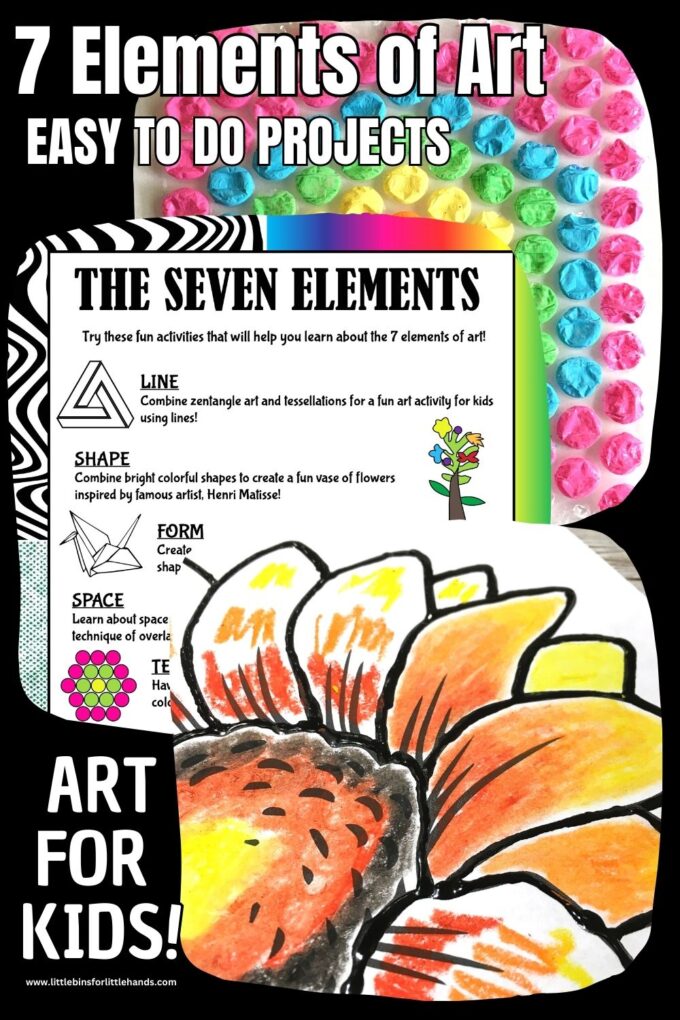
Why Teach the Elements of Art?
By introducing kids to the elements of art, they can use them as they plan and create their artwork, whether that’s abstract or real life. Learning about these elements adds to their art “toolbox, ” develops unique skills, and increases the enjoyment of doing art!
Kids learn…
Creativity
Learning the elements of art allows children to explore and experiment with different materials and techniques, encouraging them to express themselves visually creatively.
Communication
Art is a powerful form of communication, and understanding the elements of art enables children to communicate their ideas and emotions more effectively through their art.
Problem-solving
Art making requires critical thinking and problem-solving skills. Understanding the elements of art
helps children think about how to create a composition, balance elements, and use color effectively.
Self-expression
Art is an excellent way for children to express themselves and their emotions. By learning the
elements of art, children can more effectively translate their thoughts and feelings into visual form.
Tips For Teaching The 7 Elements
1. Make It Interactive
Engage children in hands-on activities that allow them to explore and experiment with different materials and techniques.
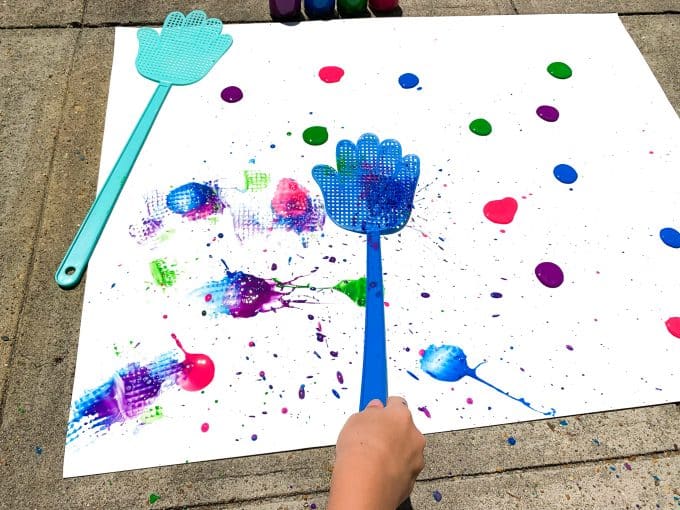
2. Encourage Experimentation
Encourage children to experiment with art elements and try new things. This can also help them develop their creativity and problem-solving skills.
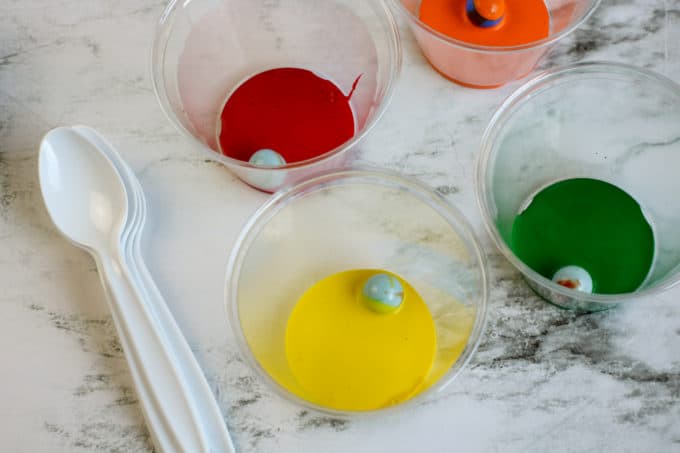
3. Provide Feedback
Provide constructive feedback to help children improve their skills and build their confidence. Encourage them to keep trying and experimenting with different techniques.
4. Make It Fun
Above all, make learning about the elements of art fun and enjoyable!
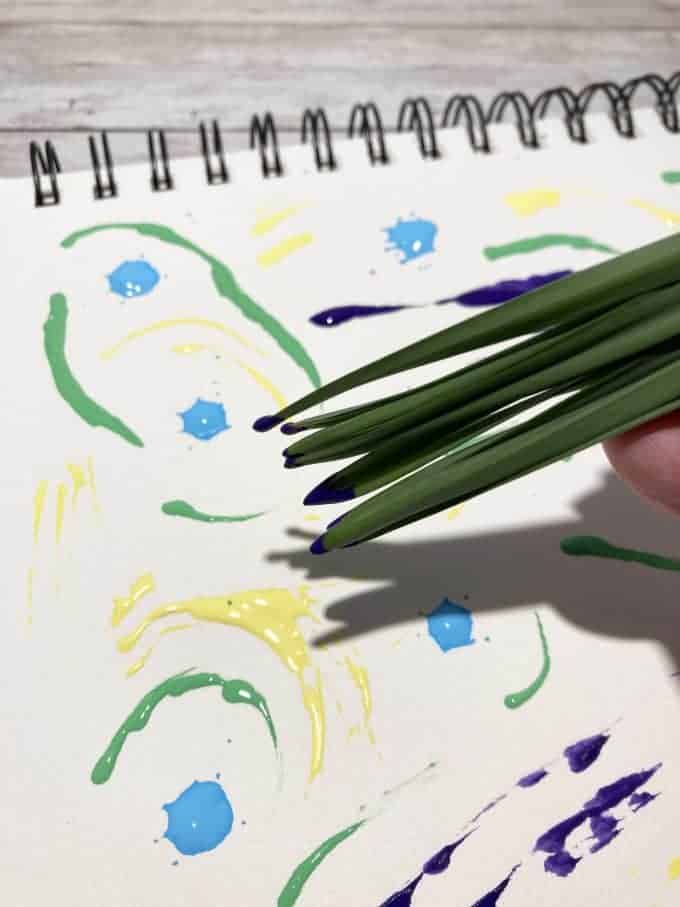
Grab your FREE elements of art projects printable!
Try these fun activities that will help you learn about the 7 elements of art! Print the free 7 Elements of Art activity guide.
Fun Art Projects That Teach The Elements Of Art
Don’t forget to grab the free printable above so you can have a list of these art projects all in one place!
Zentangle Art
Combine zentangle patterns and tessellations for a fun art activity for kids using lines!
Flower Art
Combine bright colorful shapes to create a fun vase of flowers inspired by famous artist, Henri Matisse!
Paper Sculptures
Create your own paper sculptures! A sculpture made from simple shapes is perfect for exploring the element of form.
Ice Cream Art
Learn about space in art with this famous artist inspired project using the technique of overlapping!
Bubble Wrap Painting
Have you ever thought of painting with bubble wrap? Create colorful textured art inspired by famous artist, Alma Thomas!
Pastels Flower Painting
O’Keeffe, flowers, and pastels are perfect for a simple value project that gets kids exploring famous artists!
Paint A Color Wheel
Learn how to make Skittles paint and explore a simple color wheel activity for easy art any day.
More Helpful Art Resources For Kids
Below you will find tons of easy and hands-on art projects for kids.
Printable 7 Elements Art Pack
NEW! Featured Project Pack: 7 Elements of Art
Learn about and explore the Seven Elements of Art through hands-on activities and easy-to-read information pages. Suitable for kids in elementary and middle school grades.
What’s Included:
—> Project sheet for the seven elements of art and what they are with matching projects unique to this project pack, complete with instructions, images, and templates. (Plus, an additional complete pack of the projects listed in the link above.)
—> An easy-to-read information page for each element of art. Learn all about each element.
—> Why teach the seven elements of art information page? Handy tips page.
